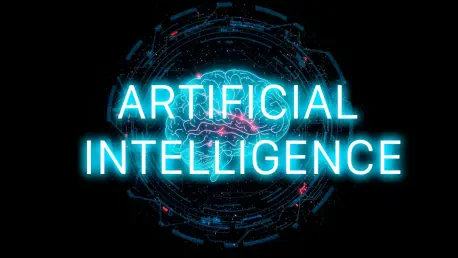As enterprises navigate the complex IT landscape, the push powered by artificial intelligence presents both opportunities and challenges for CIOs and IT leaders. With AI becoming a vital element in defining IT strategies, its integration is vastly influencing operations across industries. This roundup article explores insights from technology experts regarding how AI is reshaping enterprise IT strategies, with thoughts on current trends and future trajectories.
Unveiling the AI Revolution in Enterprise IT
The integration of AI in enterprise IT infrastructure has catapulted innovation, leading to both operational efficiencies and strategic advantages. Experts in AI development highlight the role of advanced machine learning algorithms in enhancing productivity and revolutionizing service delivery. There’s a focus on infrastructure that can support sophisticated AI applications, pushing organizations to adopt cutting-edge solutions for scaling operations effectively.
Industry insights also point to AI’s influence in garnering data-driven insights, further enabling IT infrastructures to foresee and address challenges efficiently. It’s a topic heavily discussed, with cautionary notes about maintaining a balance between technology upgrades and cost efficiency. While the pursuit of innovation drives AI integration, there are concerns about cybersecurity risks, with some experts urging a thorough assessment before full-scale adoption.
AI’s Impact on IT Challenges and Opportunities
Amidst the digital shift driven by AI, real-world applications showcase remarkable upgrades in efficiency and service provision. Several companies have adopted AI-enhanced models that streamline operations, reducing errors and operational costs. These innovations are not just theory but are evidenced by case studies of enterprises that have successfully leveraged AI for tangible results, transforming to meet modern demands.
Yet, AI adoption in enterprise IT isn’t without its complications, as experts caution against potential pitfalls. Challenges include erratic data management and difficulty in integrating AI with existing systems. The risk of disruption and unforeseen costs remains a concern for IT leaders, prompting a careful weighing of opportunities against potential downsides.
Emerging AI Trends in Global IT Strategies
The latest trends show AI reshaping IT strategies worldwide, with significant imprints in regional markets. Regions are adapting differently based on local needs and resources, influencing global technology strategies. Corporations are examining how AI challenges conventional practices, offering transformative potential that could redefine long-held beliefs about IT processes.
Strategists recognize the bridging of AI with traditional IT models, marking a pivotal shift in strategy development. By contrasting traditional approaches with AI-augmented models, enterprises reveal the stark differences in operational outcomes. Speculation abounds about the future of AI trajectory in IT, with varying predictions about its role in transforming enterprise landscapes.
Practical Applications and Strategic Guidelines for AI Integration
Successful integration of AI requires businesses to rethink their IT transformation frameworks. Strategic guidelines underline the need for meticulous planning, ensuring AI blends seamlessly with existing strategies. Translating AI advancements into practical applications serves as a guidepost for results-driven deployments, challenging traditional norms for strategic IT planning.
IT leaders are encouraged to glean strategic insights that foster agile and innovative approaches while maintaining operational integrity. As AI continues to evolve, the importance of adaptive strategies remains prominent, serving as a backbone for ongoing transformations across enterprises.
The Long-Lasting Impact of AI on IT Strategies
The strides made by AI-driven strategies in reshaping enterprise IT have had lasting impacts over the past few years. It continues to evolve, promising further advancements that hold transformative potential for IT operations. Reflecting on these changes provides valuable lessons, with enterprises acknowledging the need to embrace a forward-thinking approach infused with AI capabilities.
Moving forward, IT leaders are urged to harness the transformative power of AI responsibly, ensuring a sustained competitive advantage while navigating potential pitfalls that accompany technological evolution. As the industry progresses, staying abreast of AI developments and implementing informed strategies will be central to thriving in the rapidly changing enterprise IT landscape.









